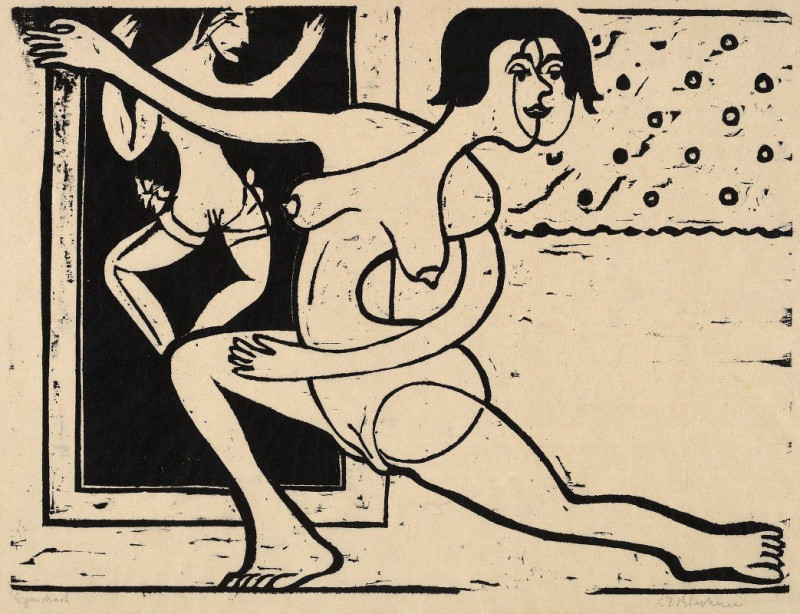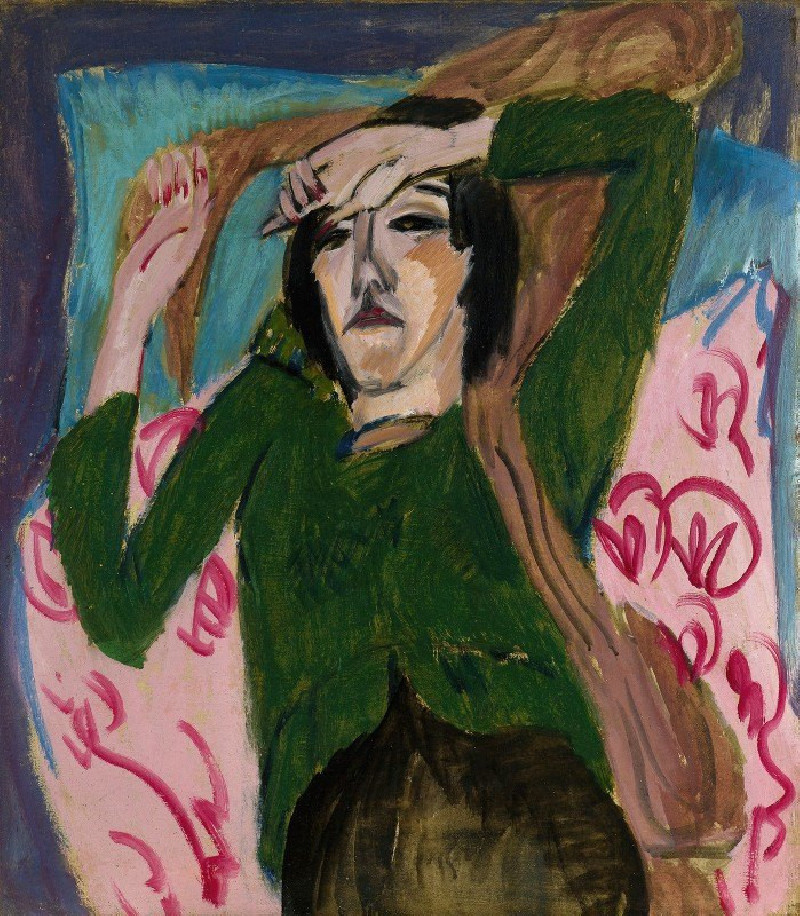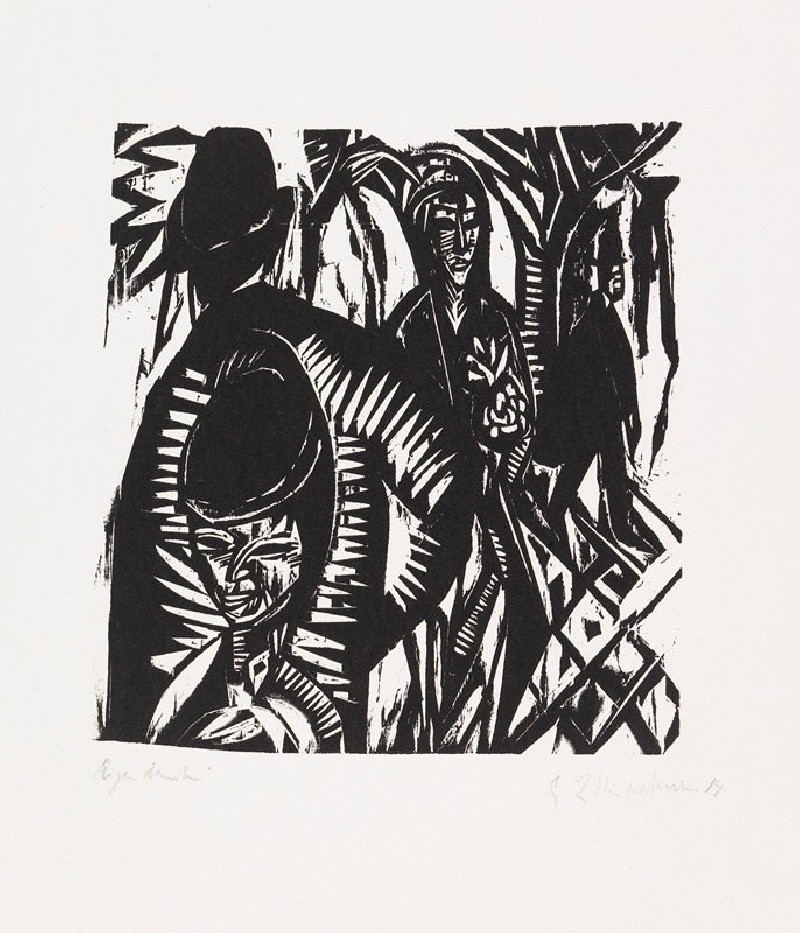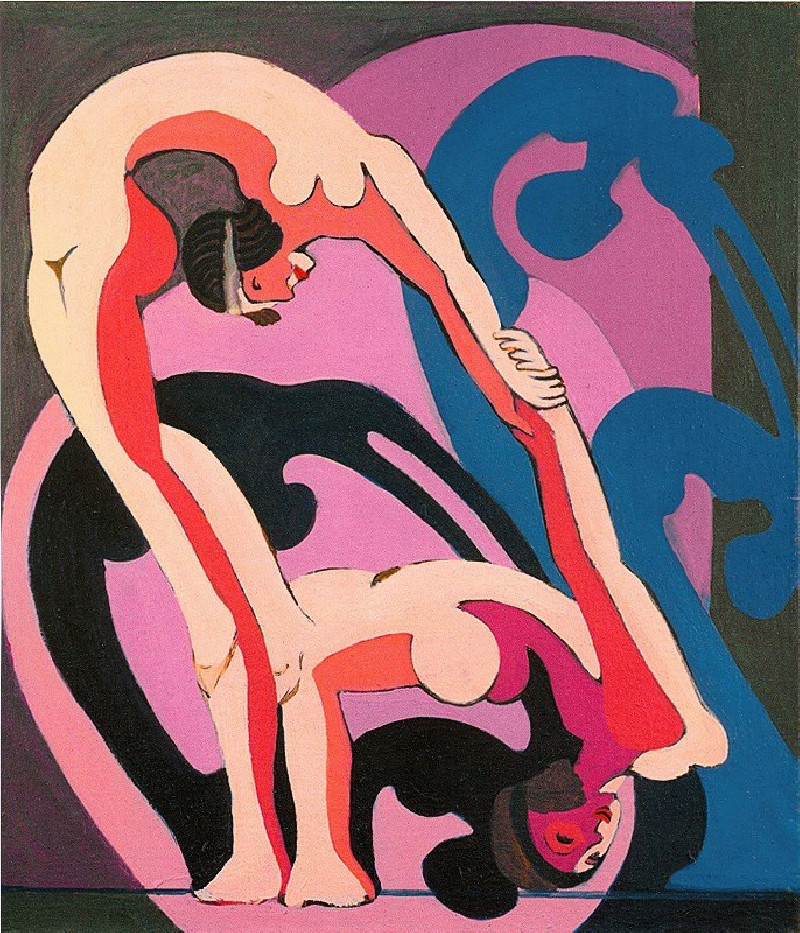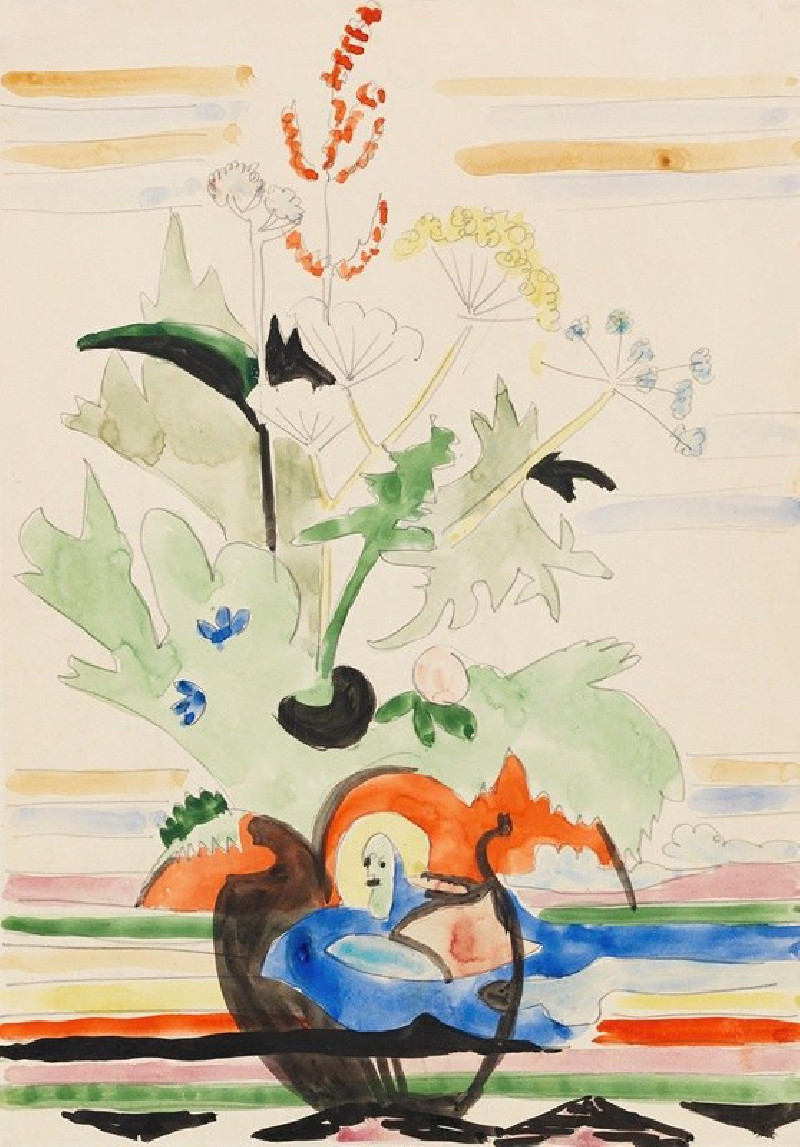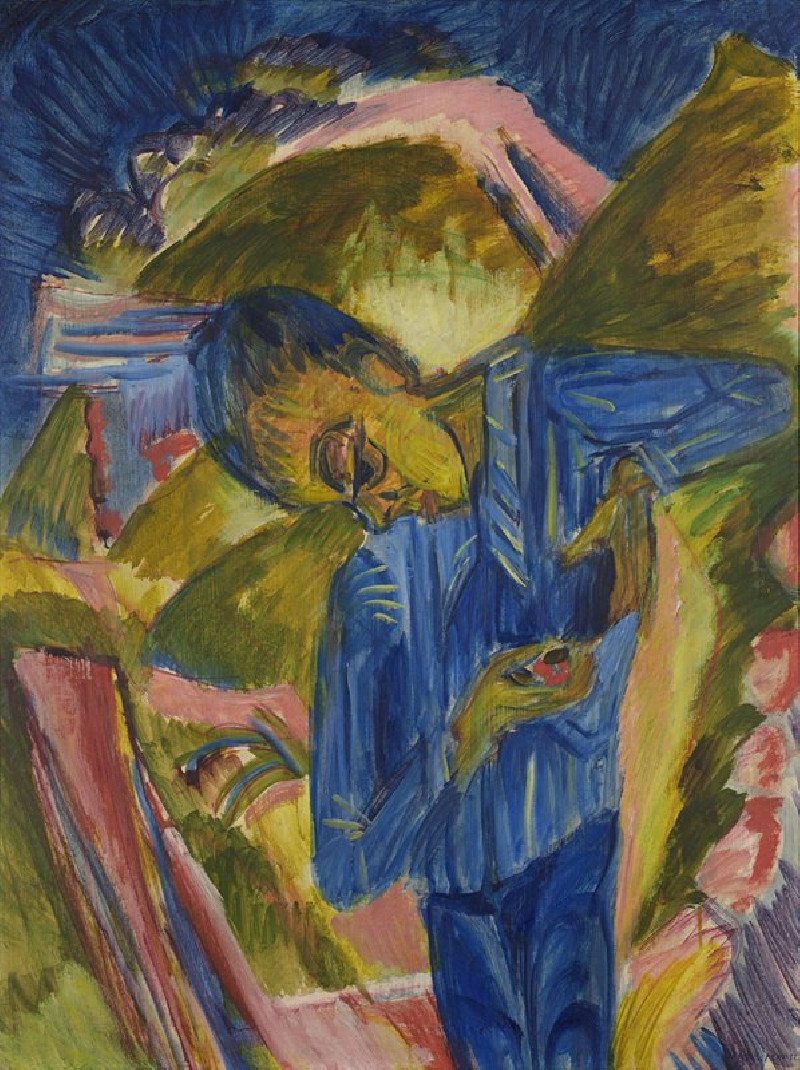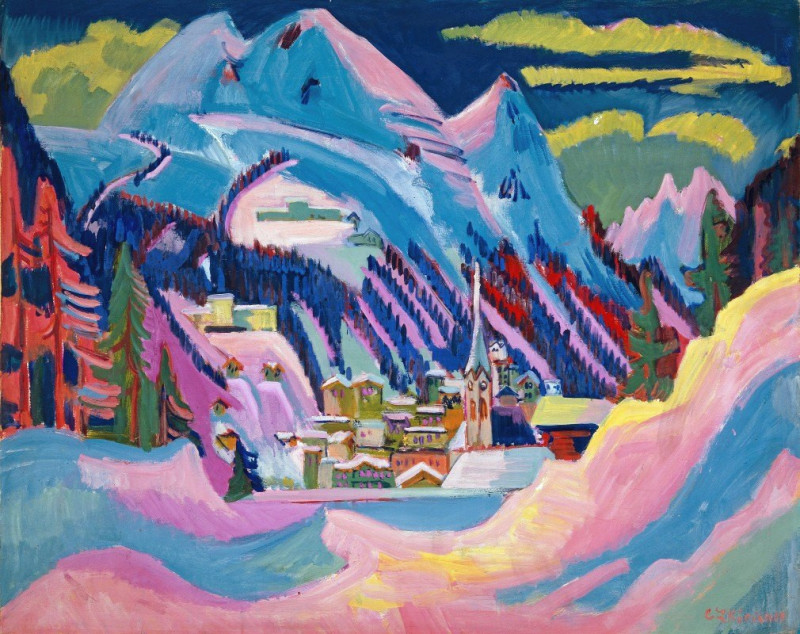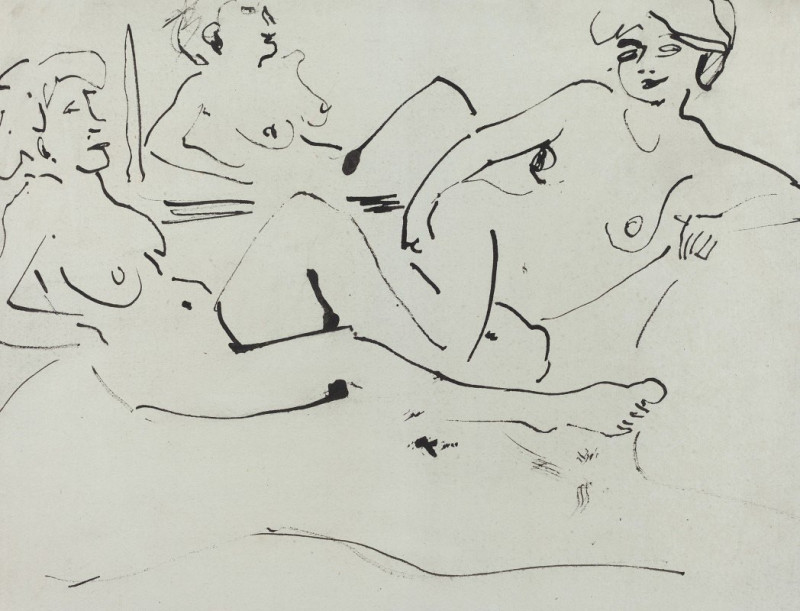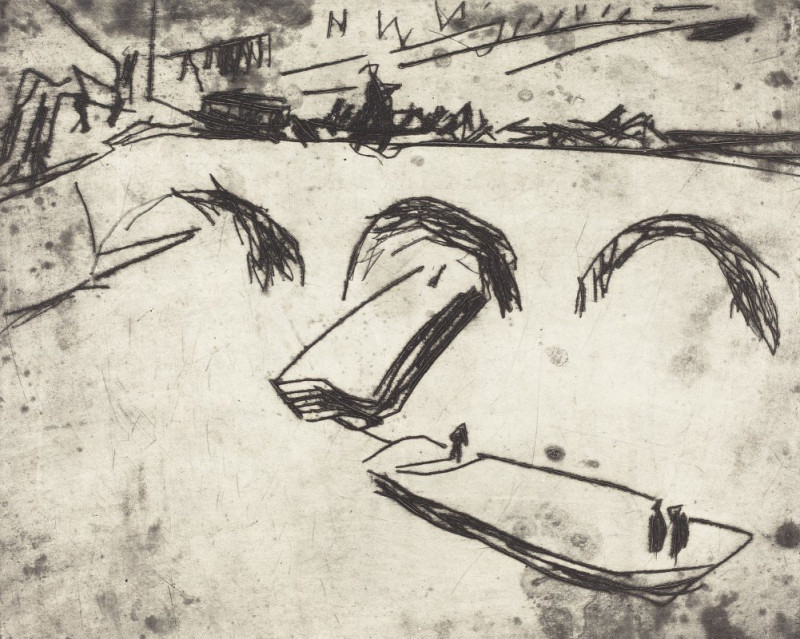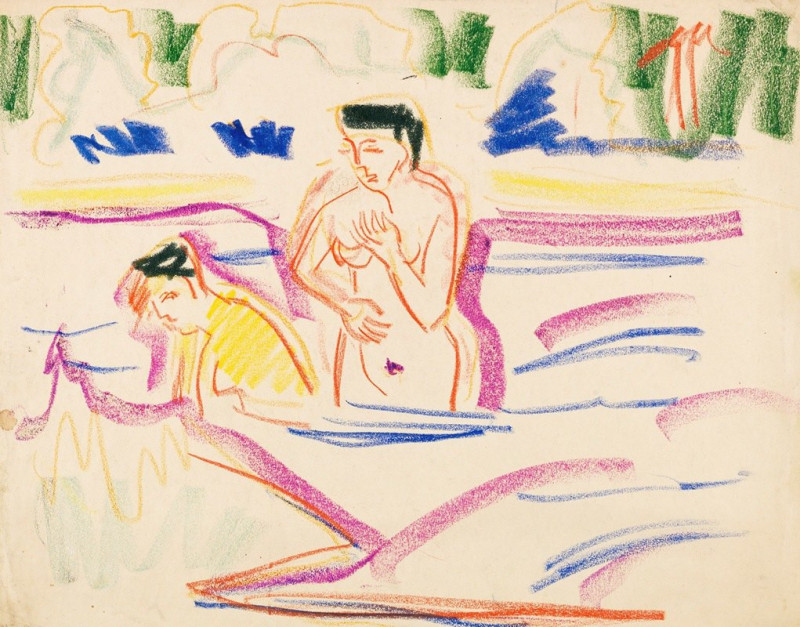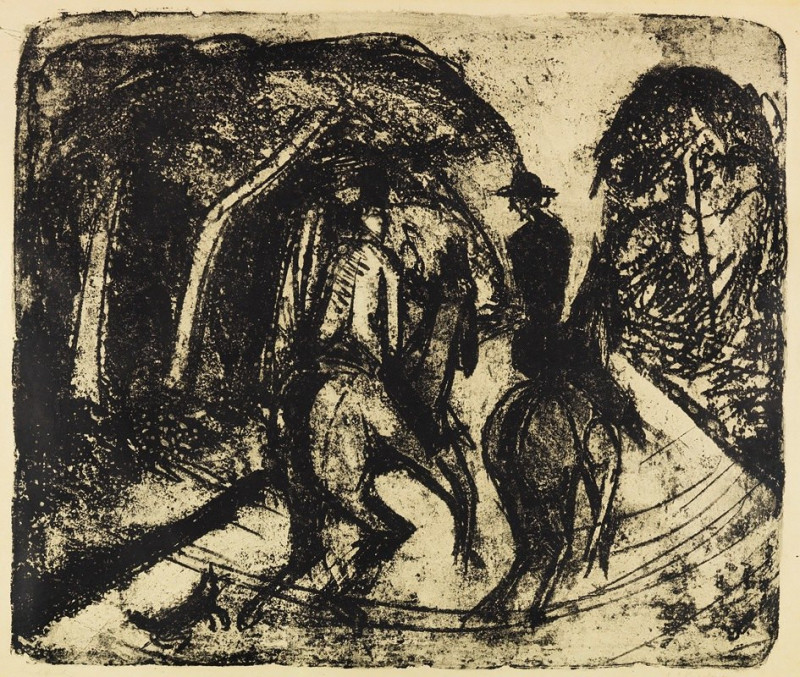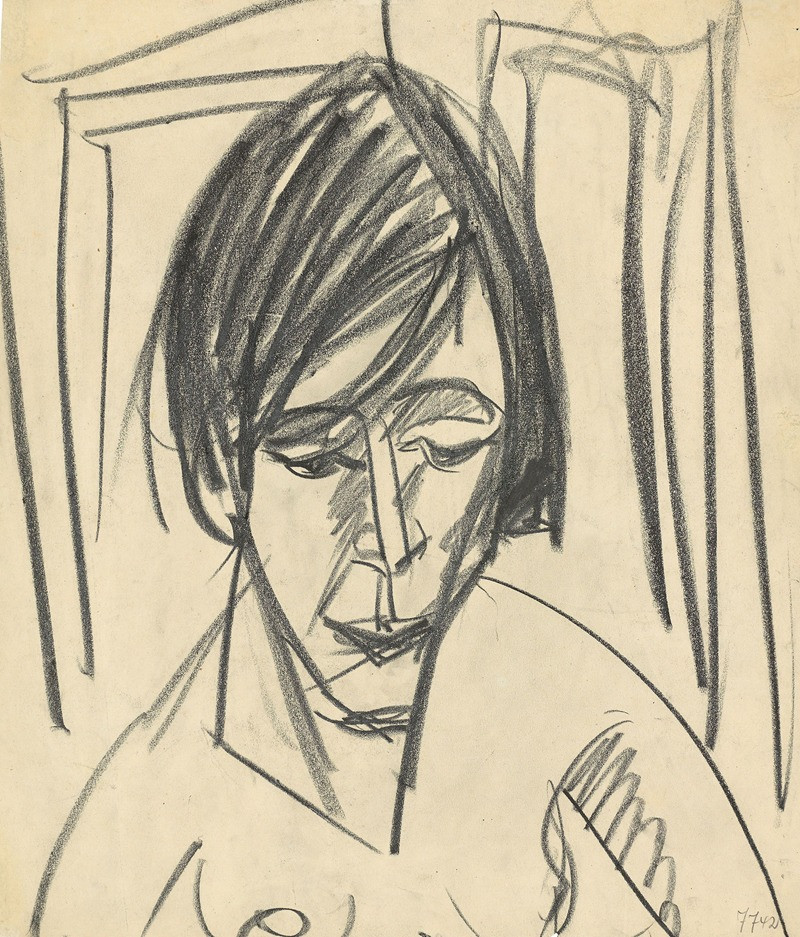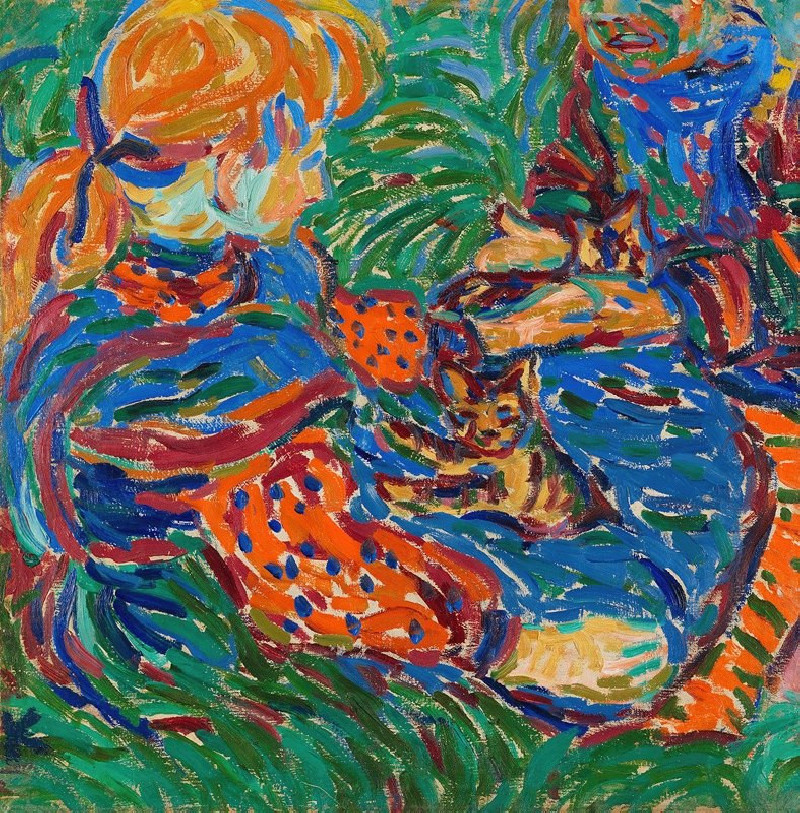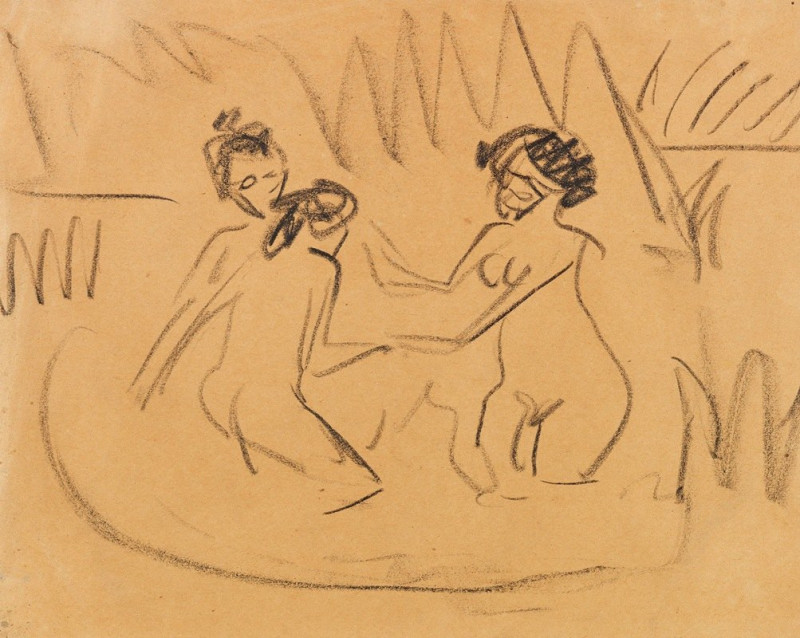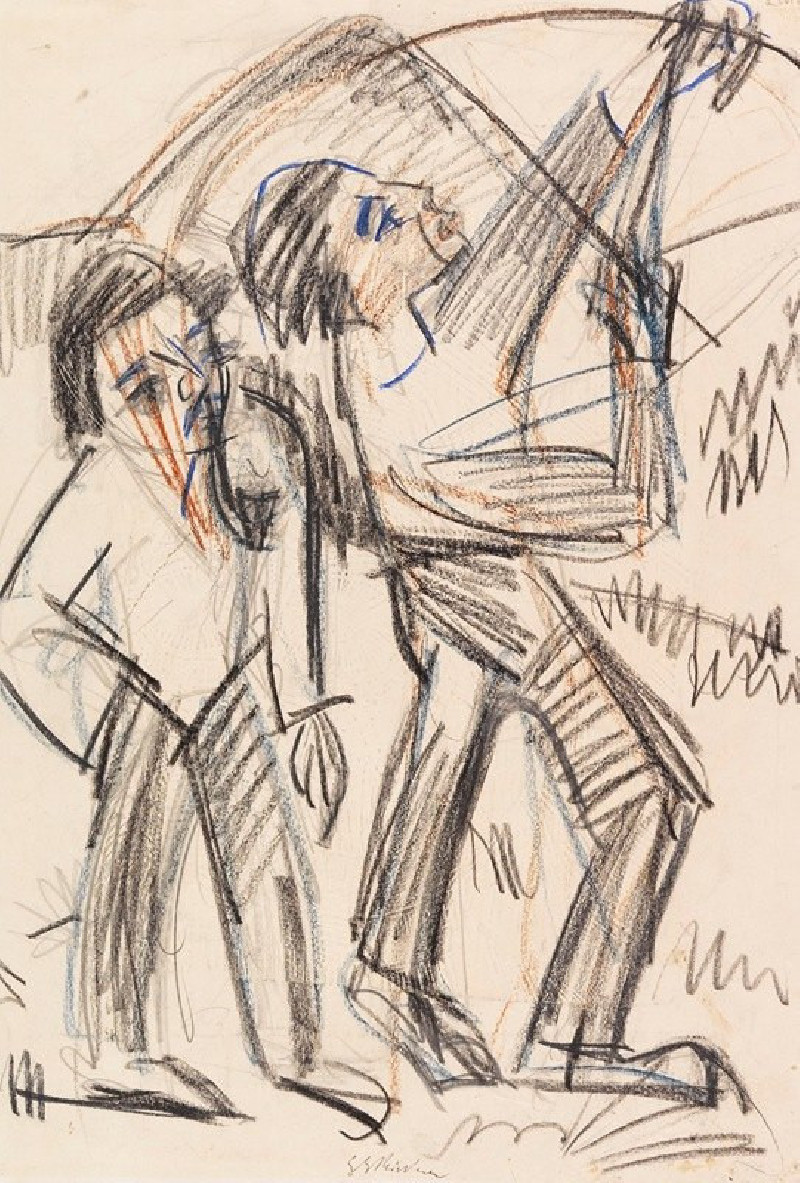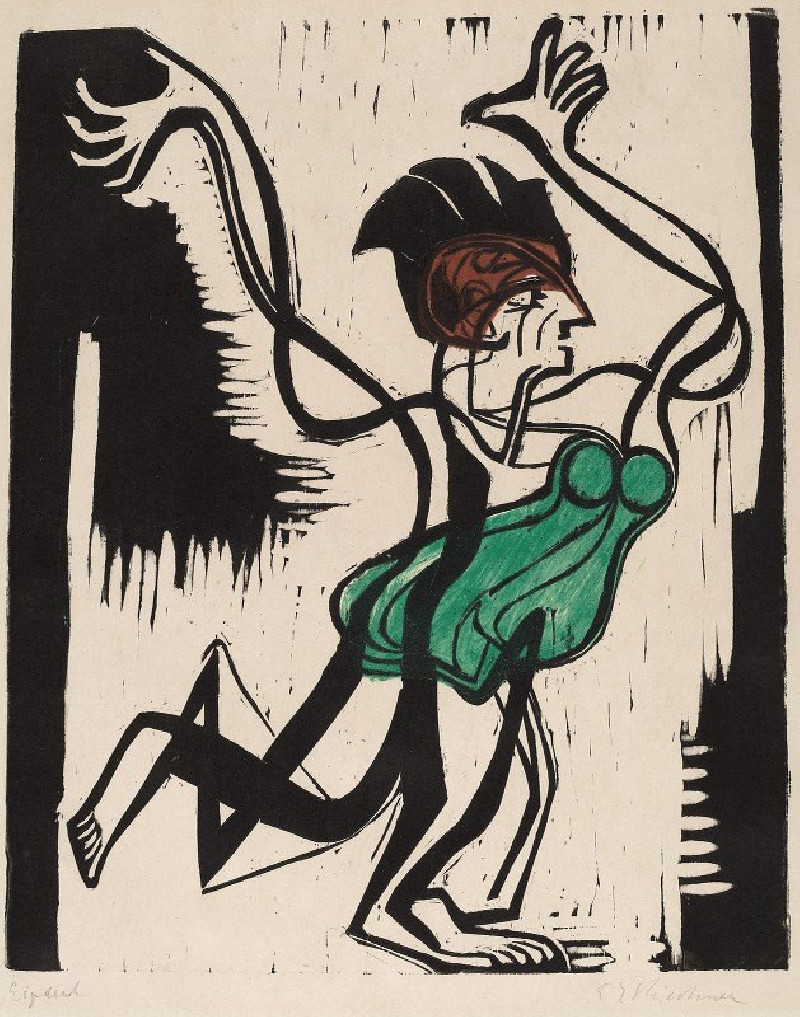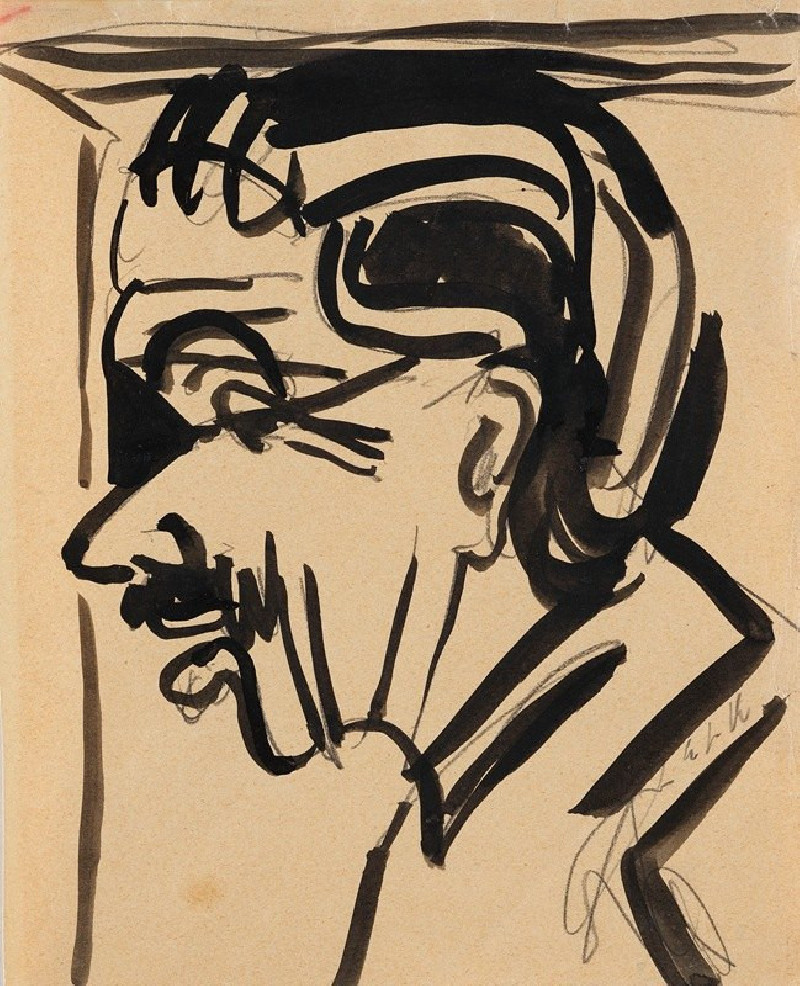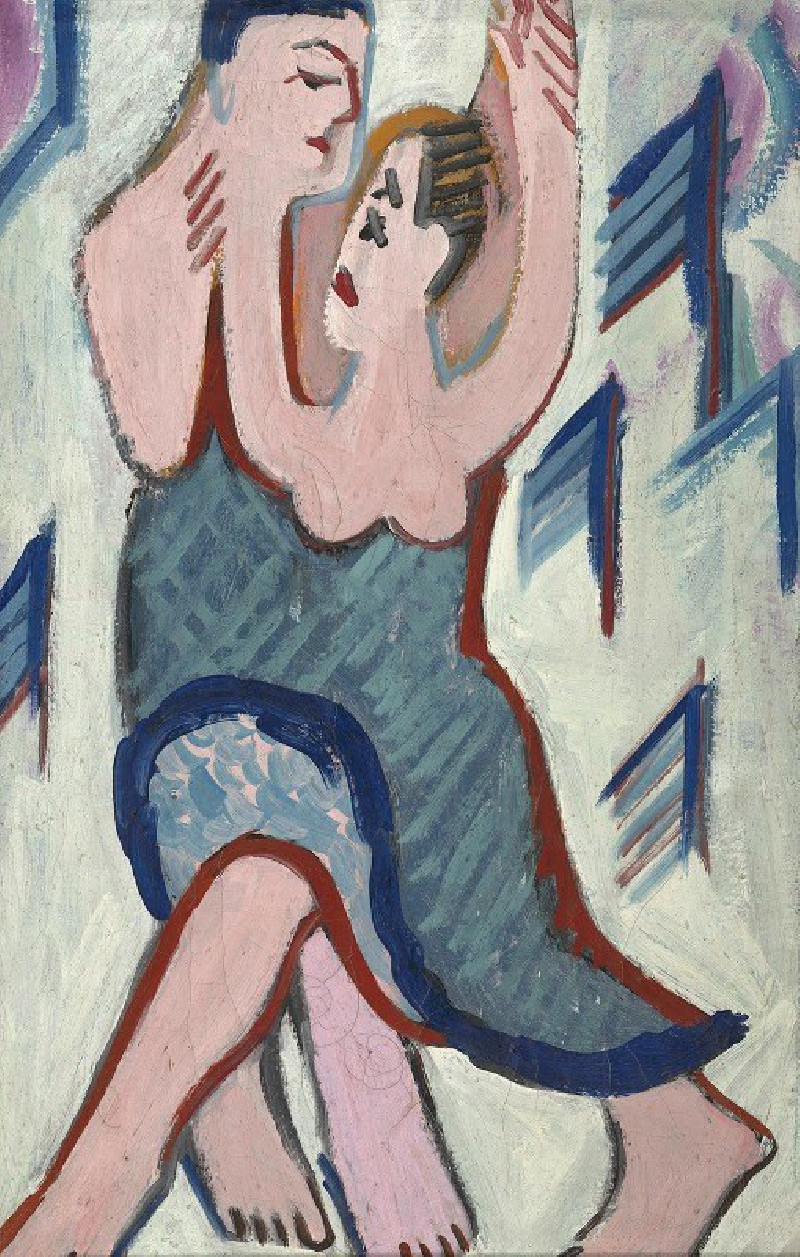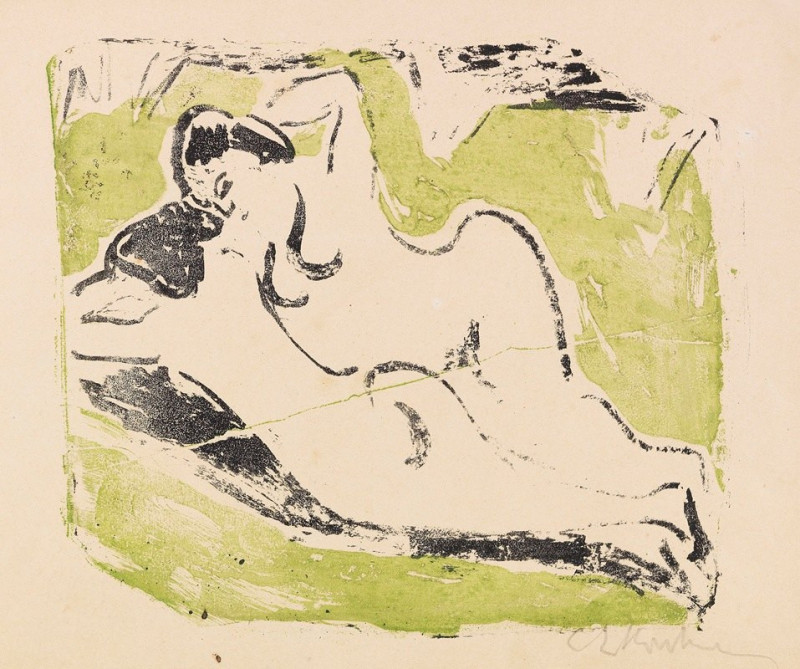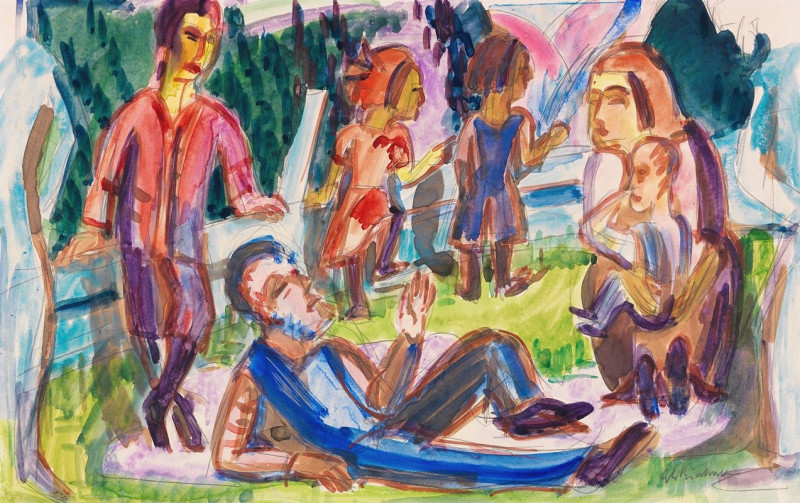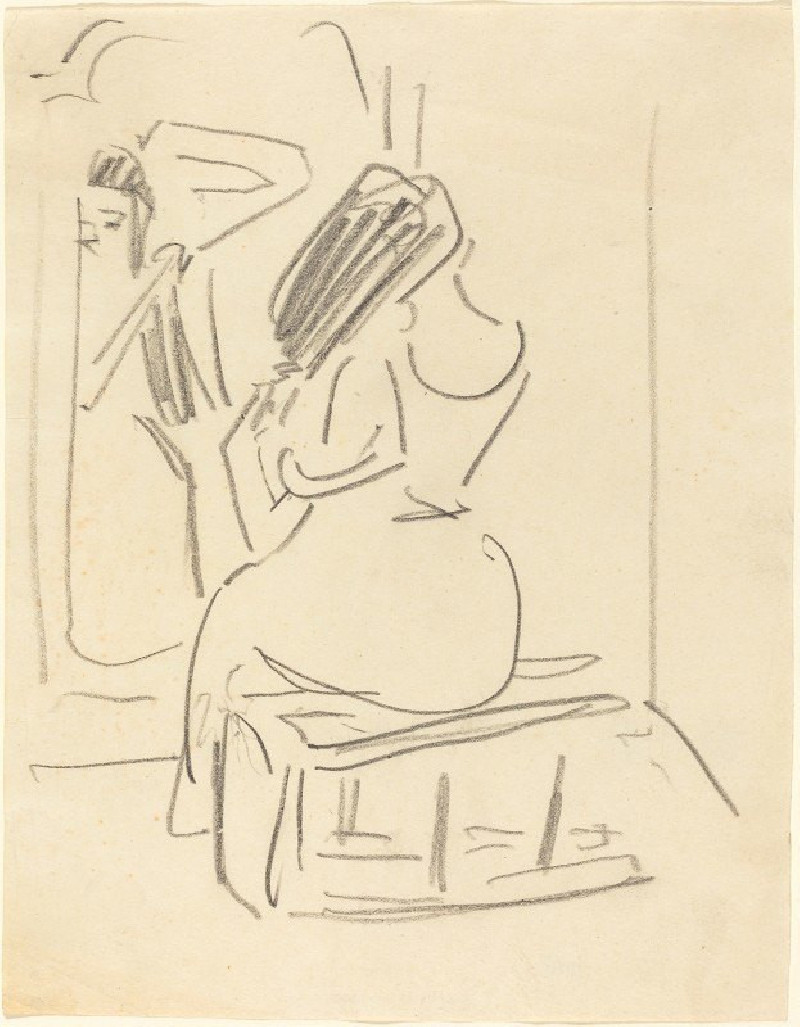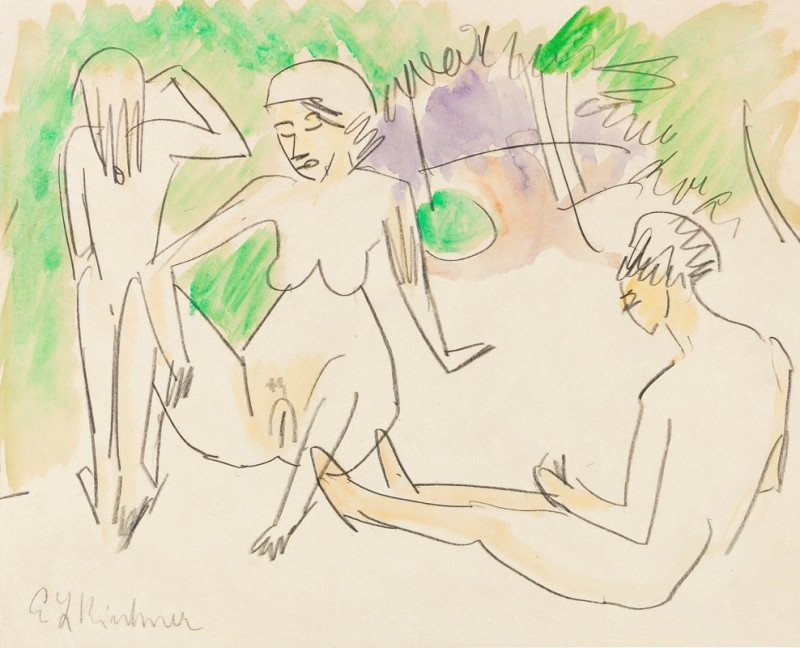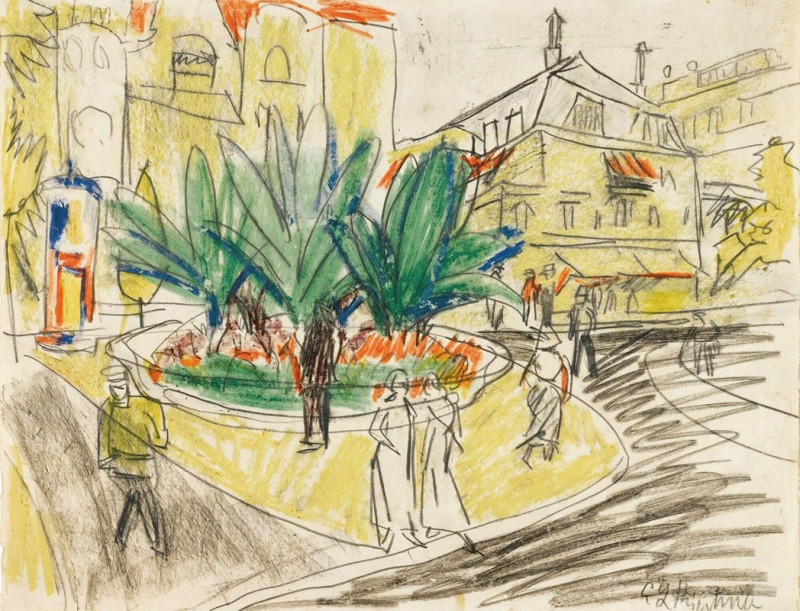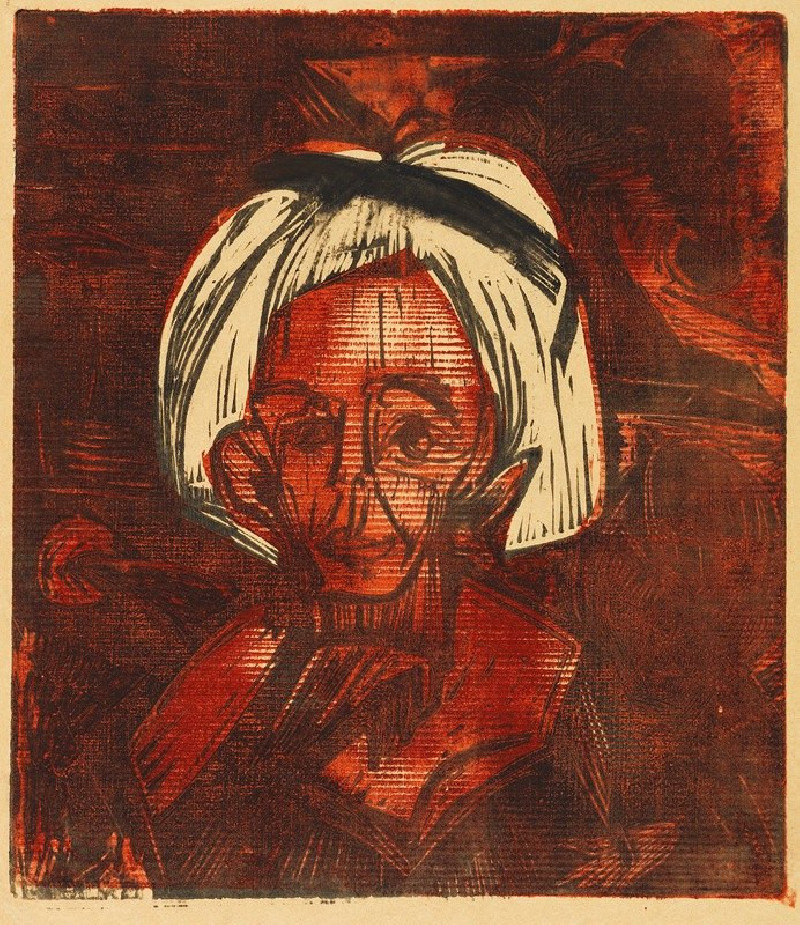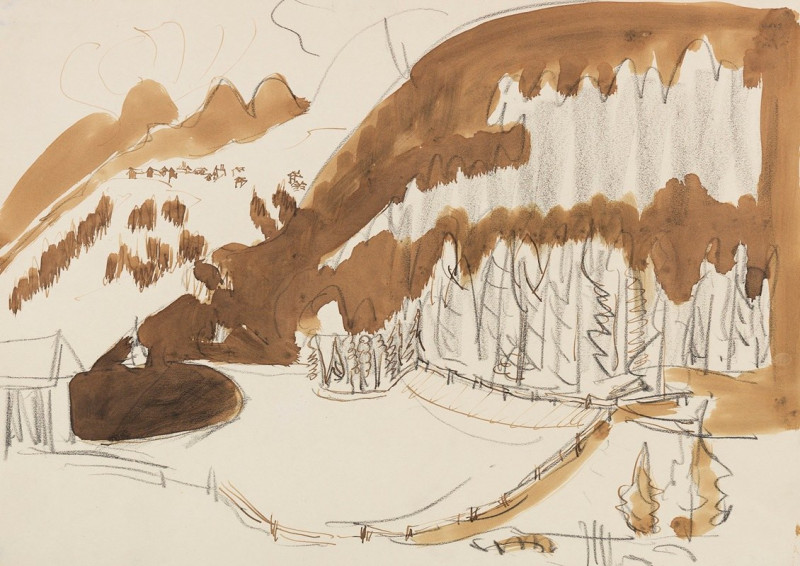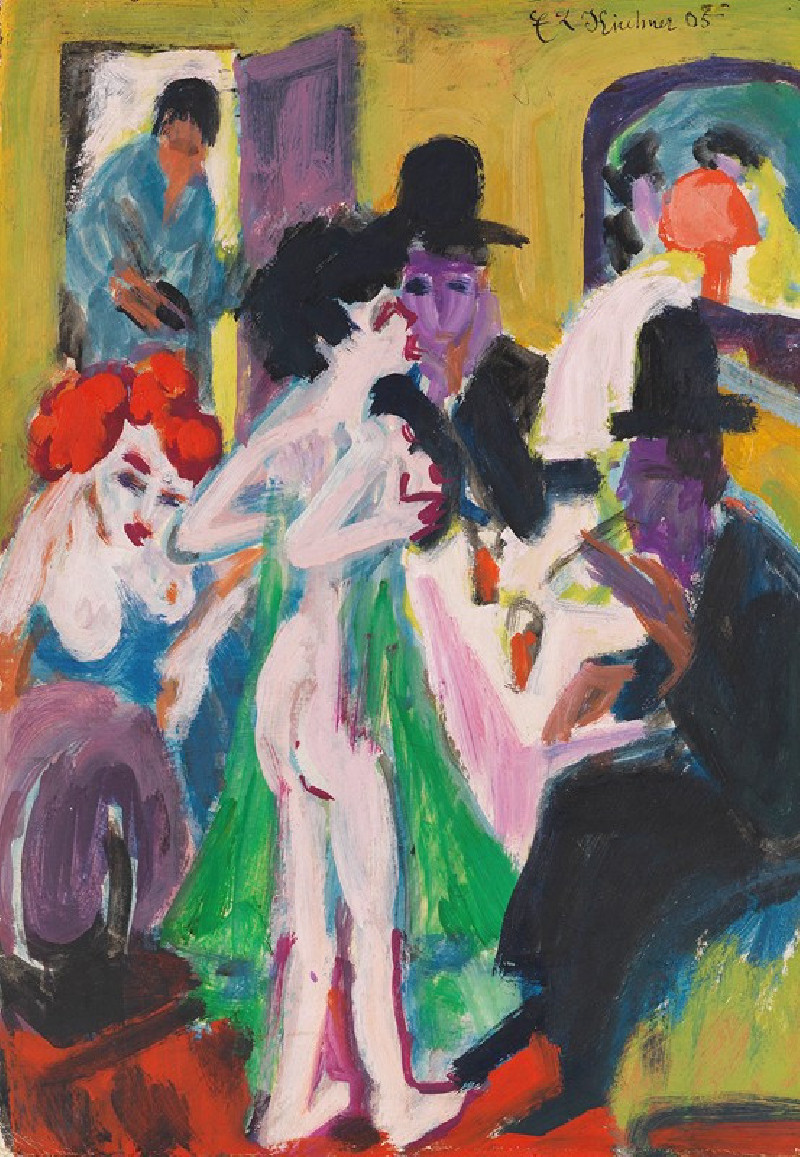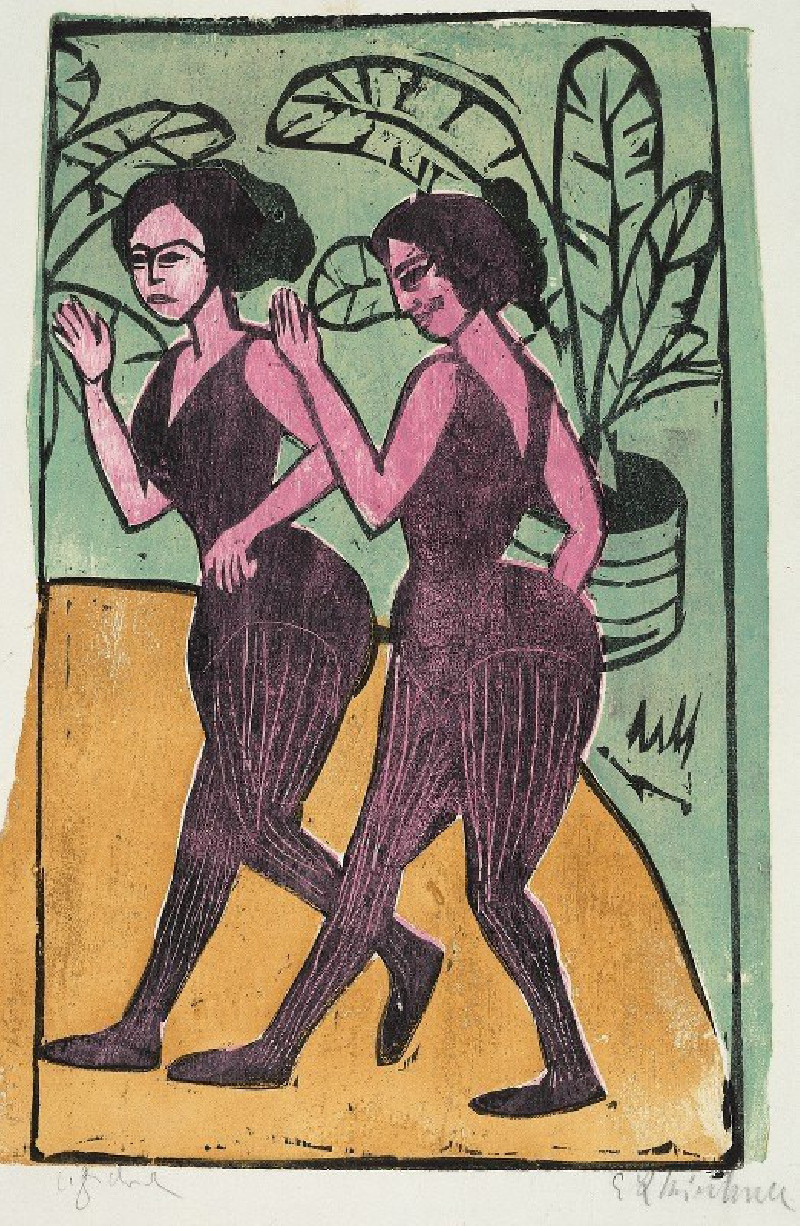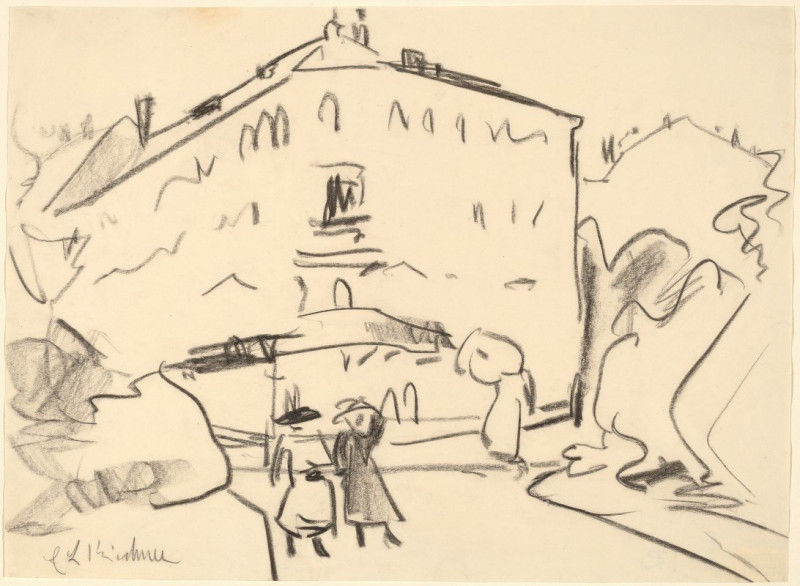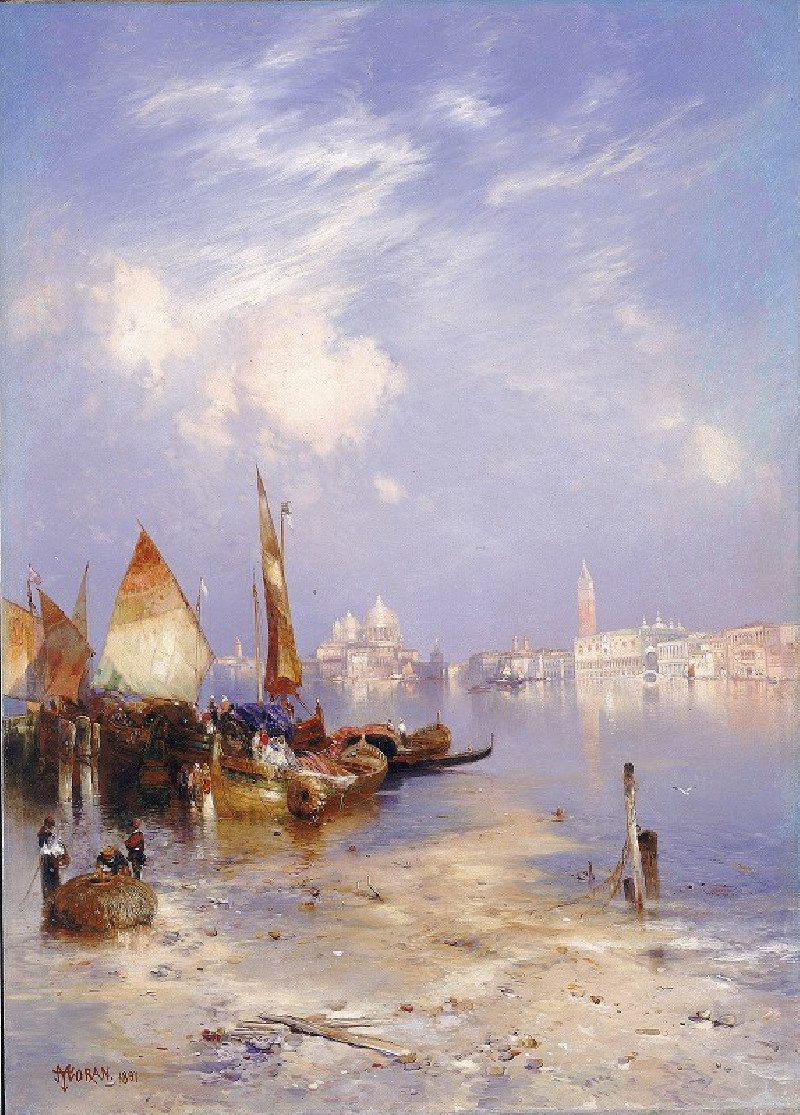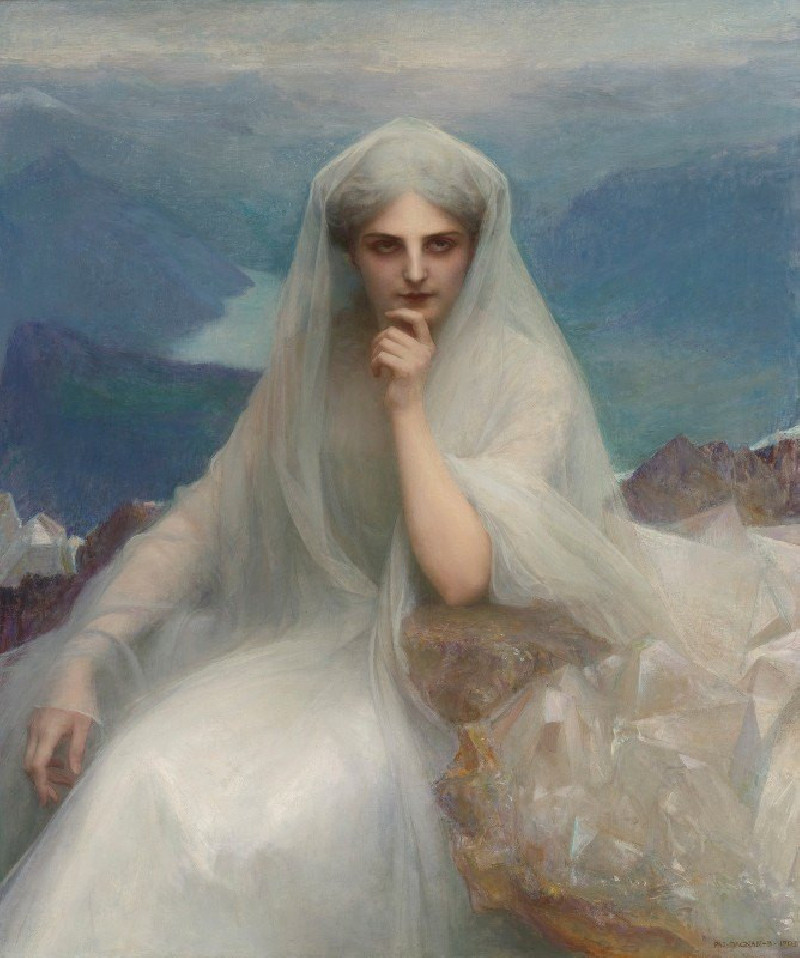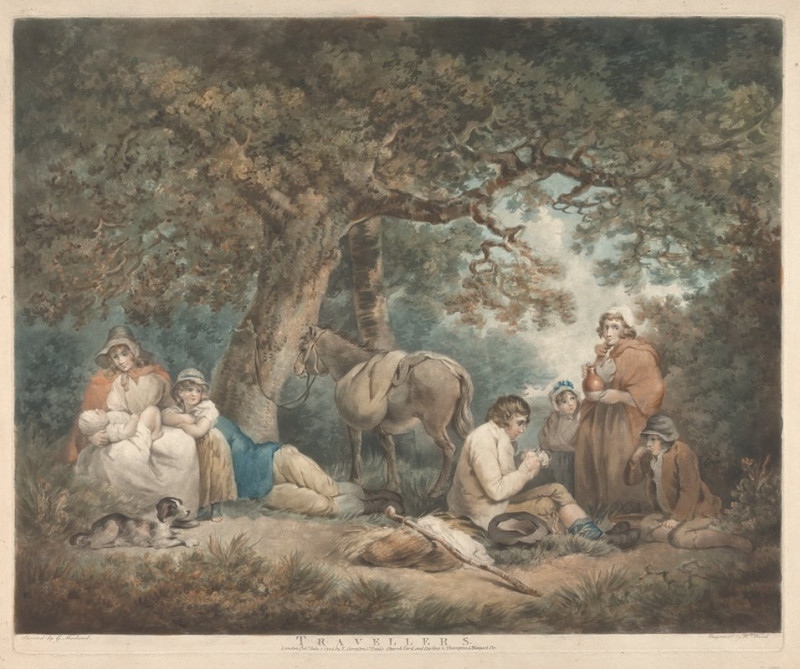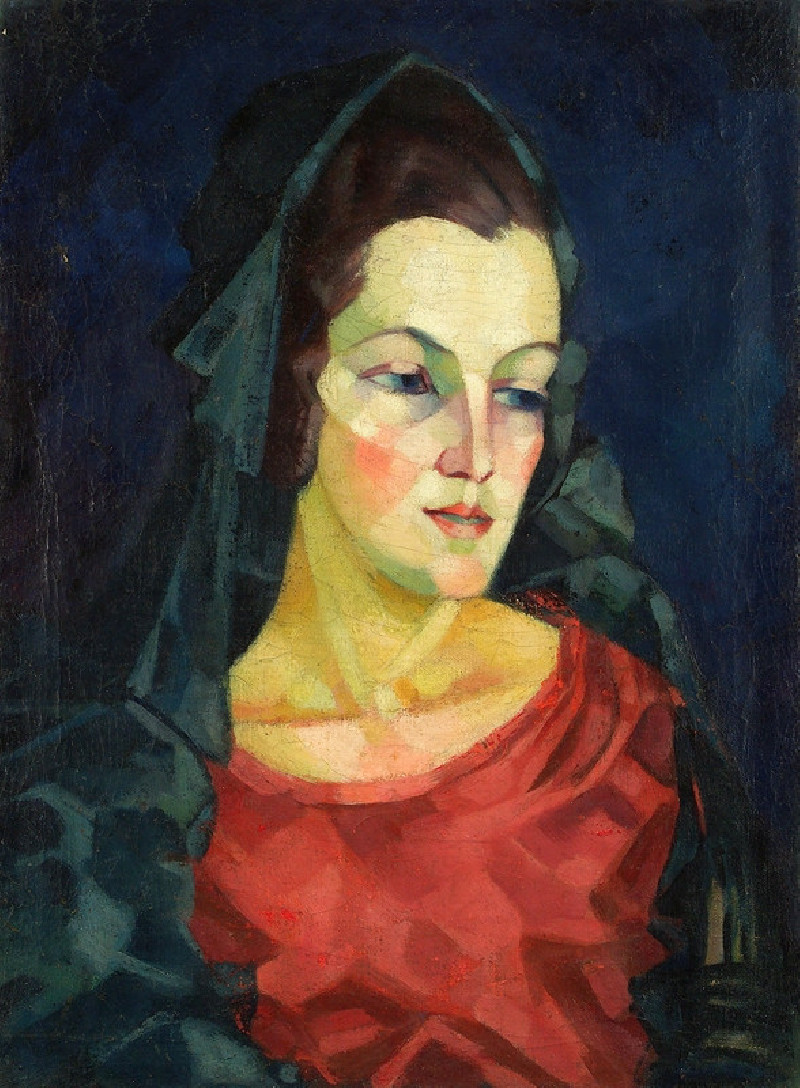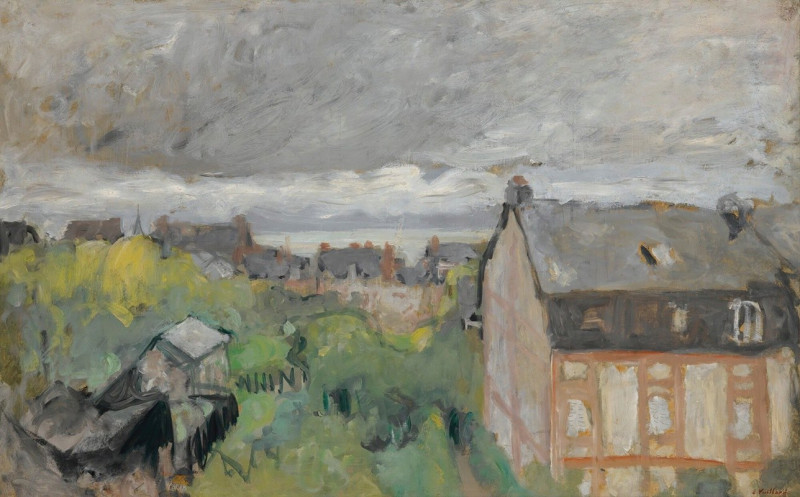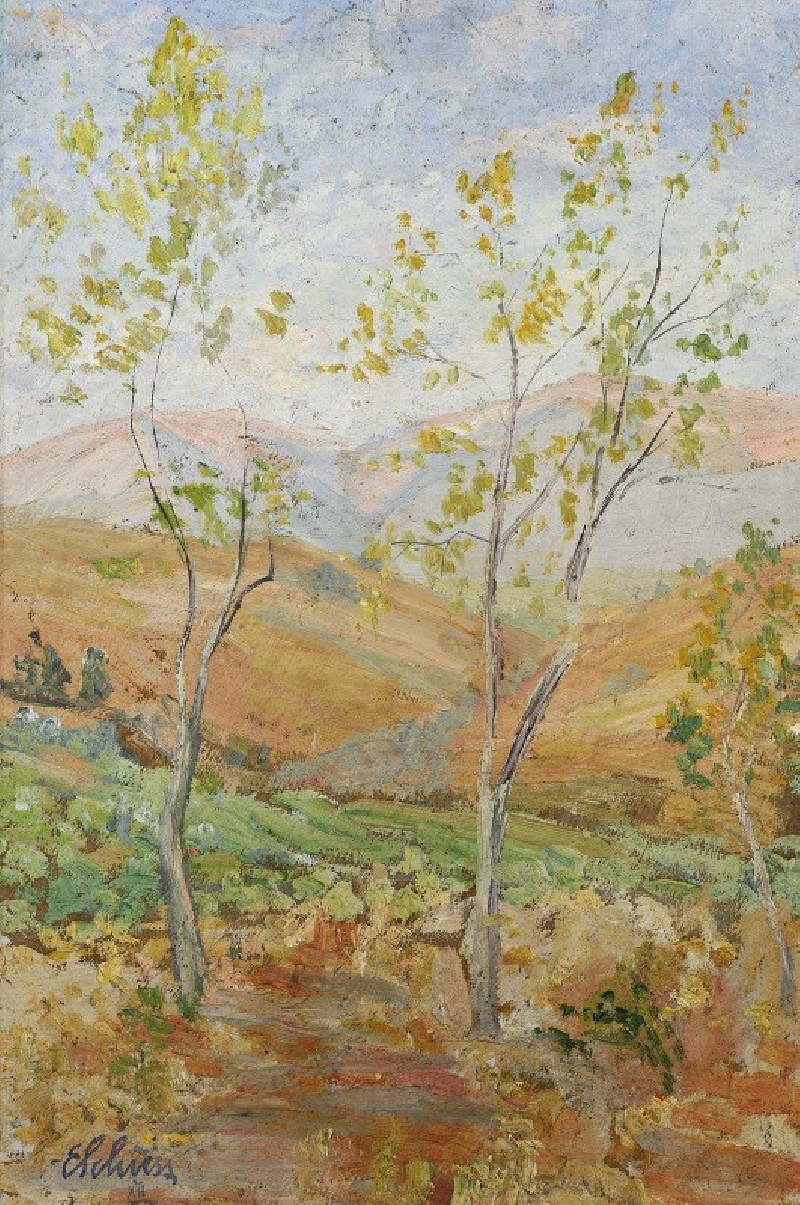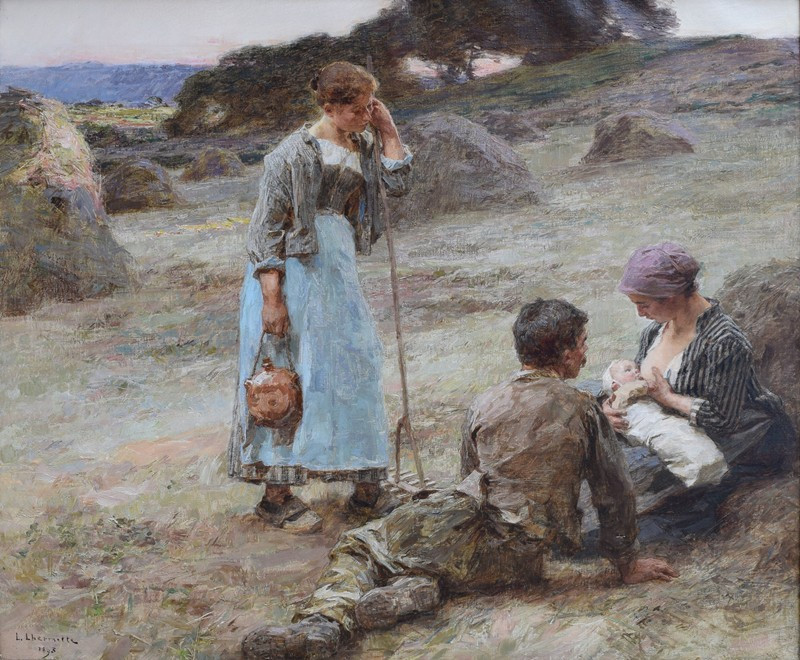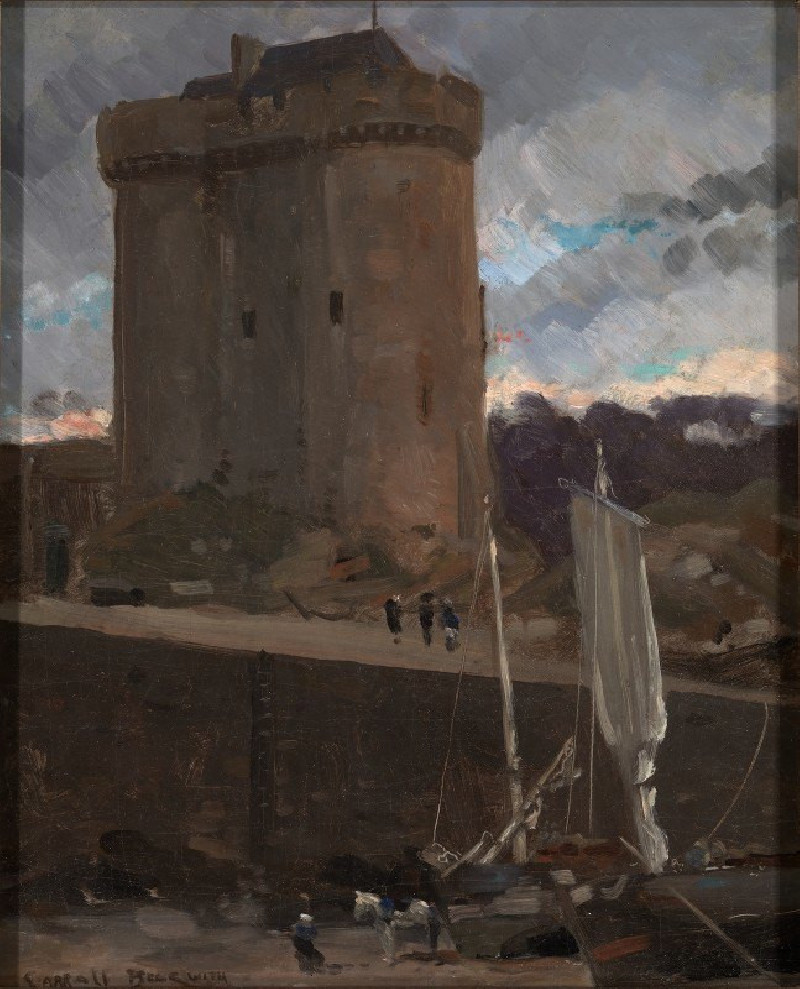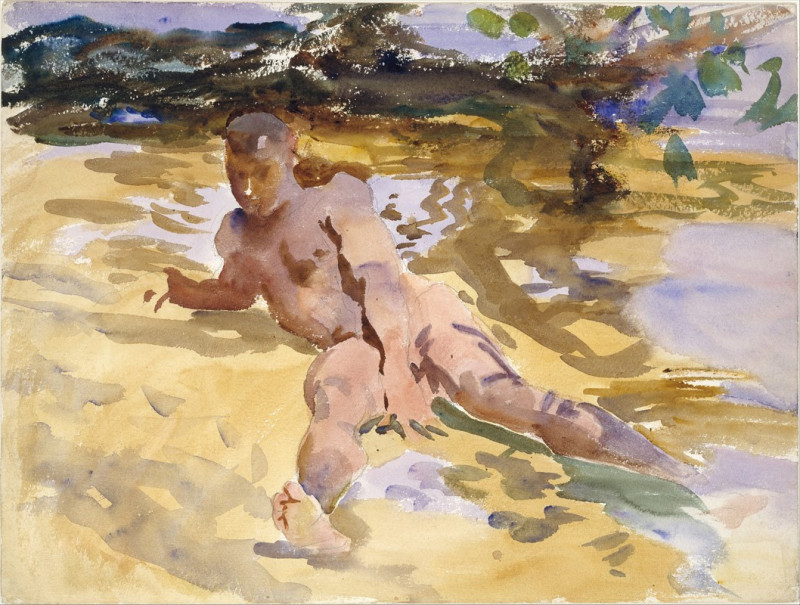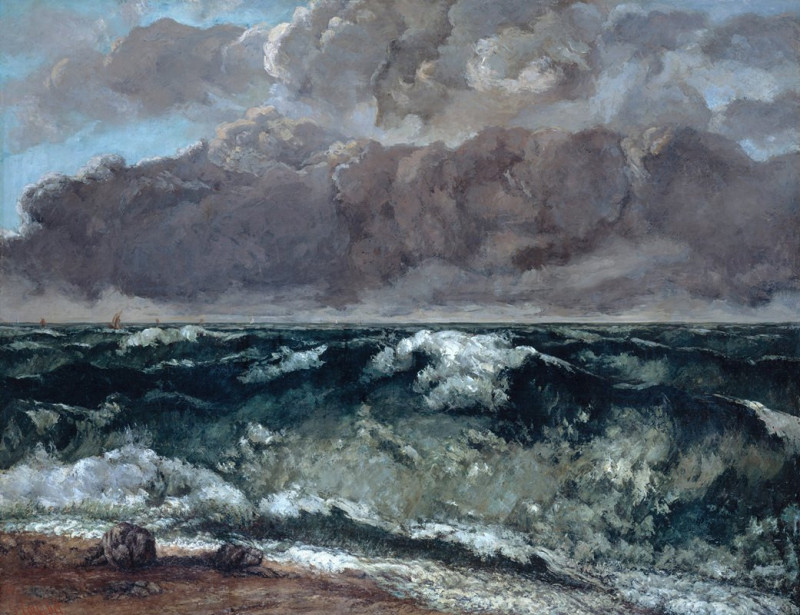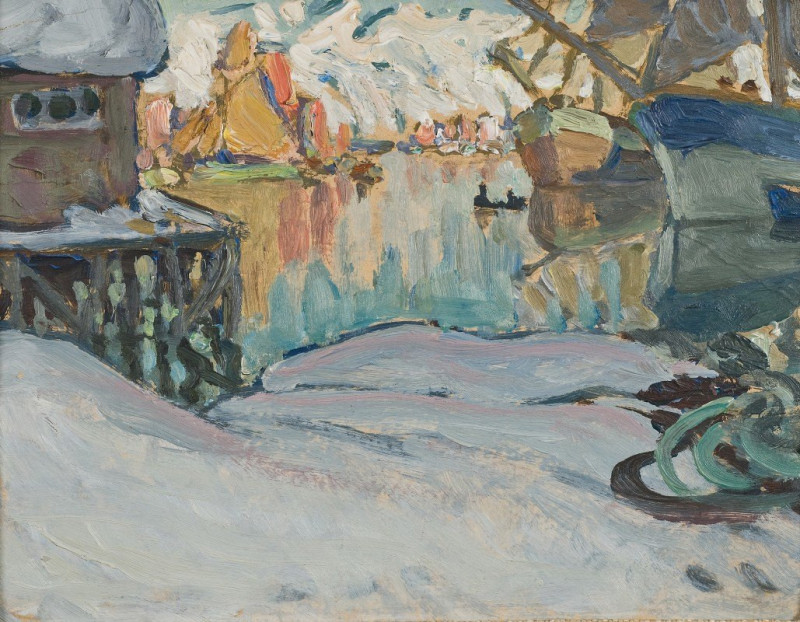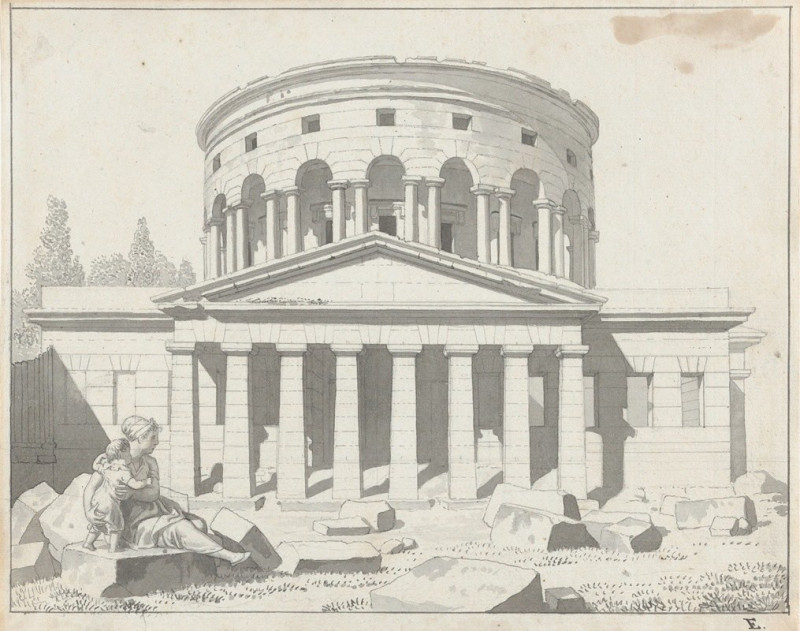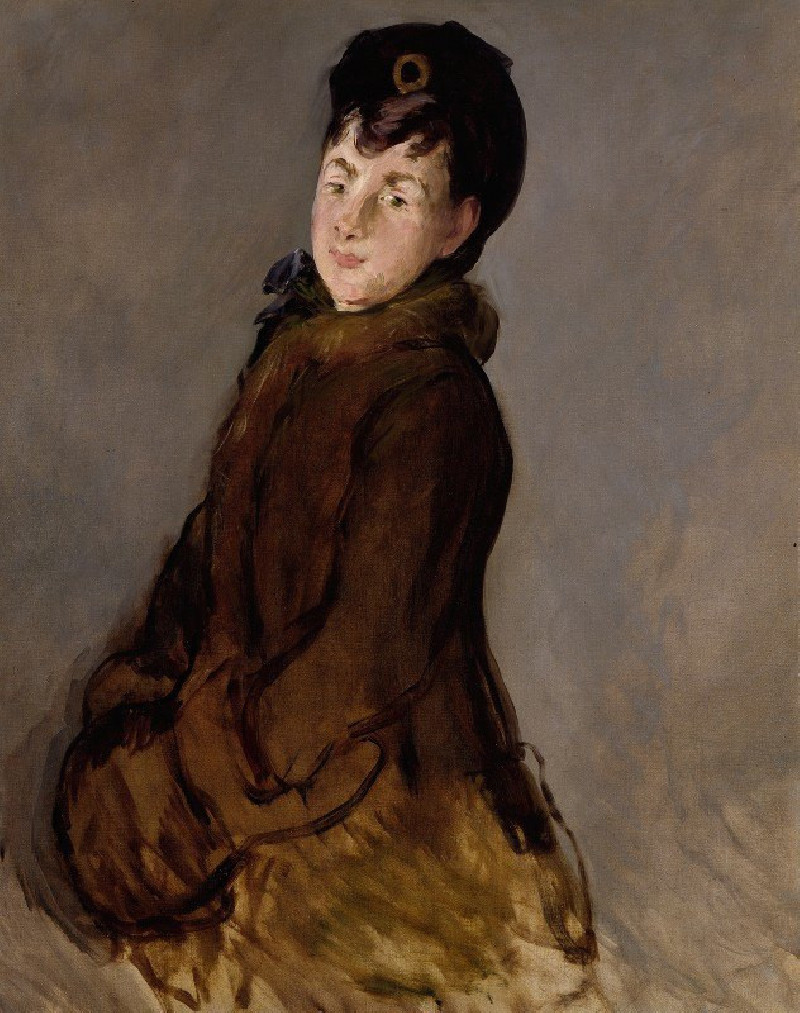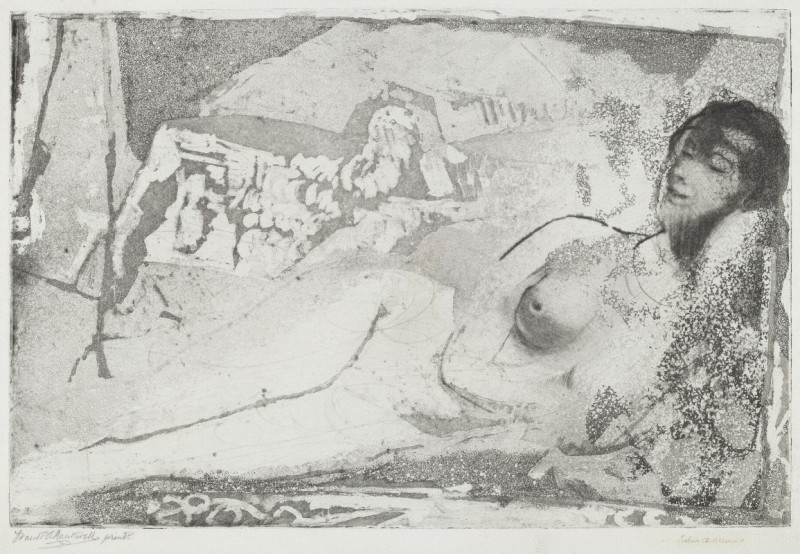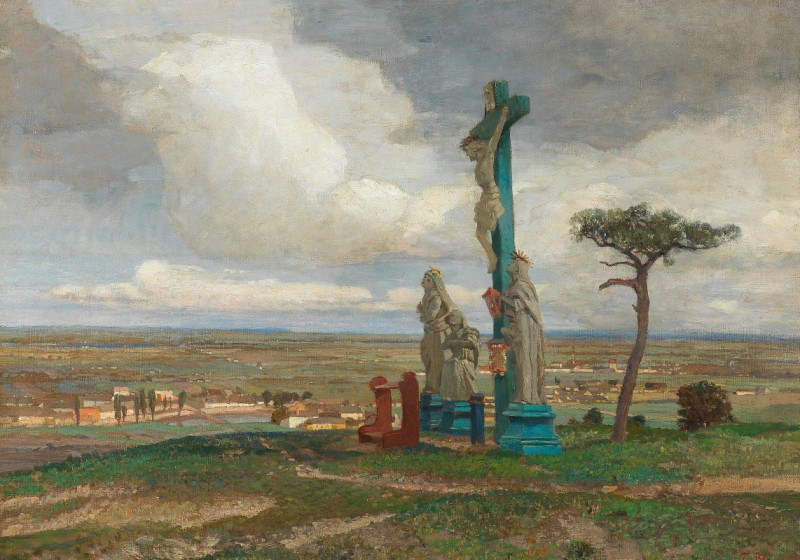Dancer Practicing (1934)
Technique: Giclée quality print
Recommended by our customers
More about this artwork
"Dancer Practicing" (1934) is a captivating woodcut by German expressionist artist Ernst Ludwig Kirchner that vividly captures the intensity and grace of a dancer in motion. This artwork depicts two figures: one actively engaged in a dynamic dance pose and the other possibly observing or mirroring the movement. Employing bold, stark lines and contrasting dark and light areas, Kirchner conveys both the physicality and the expressive quality of dance. The primary figure leans forward, hands against a dark frame—possibly a mirror—emphasizing the motion and emotion inherent in practice. The backdrop, with its abstract spots, might suggest a rehearsal space, adding context to the dancer’s energetic practice session. Kirchner’s style here, characterized by simplification of form and a powerful outline, underscores the expression and rhythmic movement that dance entails, offering viewers a snapshot not just of physical action, but of the artistic spirit behind it.
Delivery
Returns
Ernst Ludwig Kirchner (1880–1938) was one of the most important German Expressionist painters. He was a co-founder of Die Brücke, a group of German expressionist artists formed in Dresden in 1905. Die Brücke and Kirchner took inspiration from Vincent Van Gogh and Edvard Munch, as well as African and Oceanic art. They used woodblock printing as a medium to showcase their signature style: flat, unrealistic images with vivid colors. The recurring themes in Kirchner's artworks included exotic cultures, faraway landscapes, self-portraits, dancers and Berlin street life. His paintings and prints effectively portrayed non-European cultures despite the fact that he never traveled outside of Europe.

